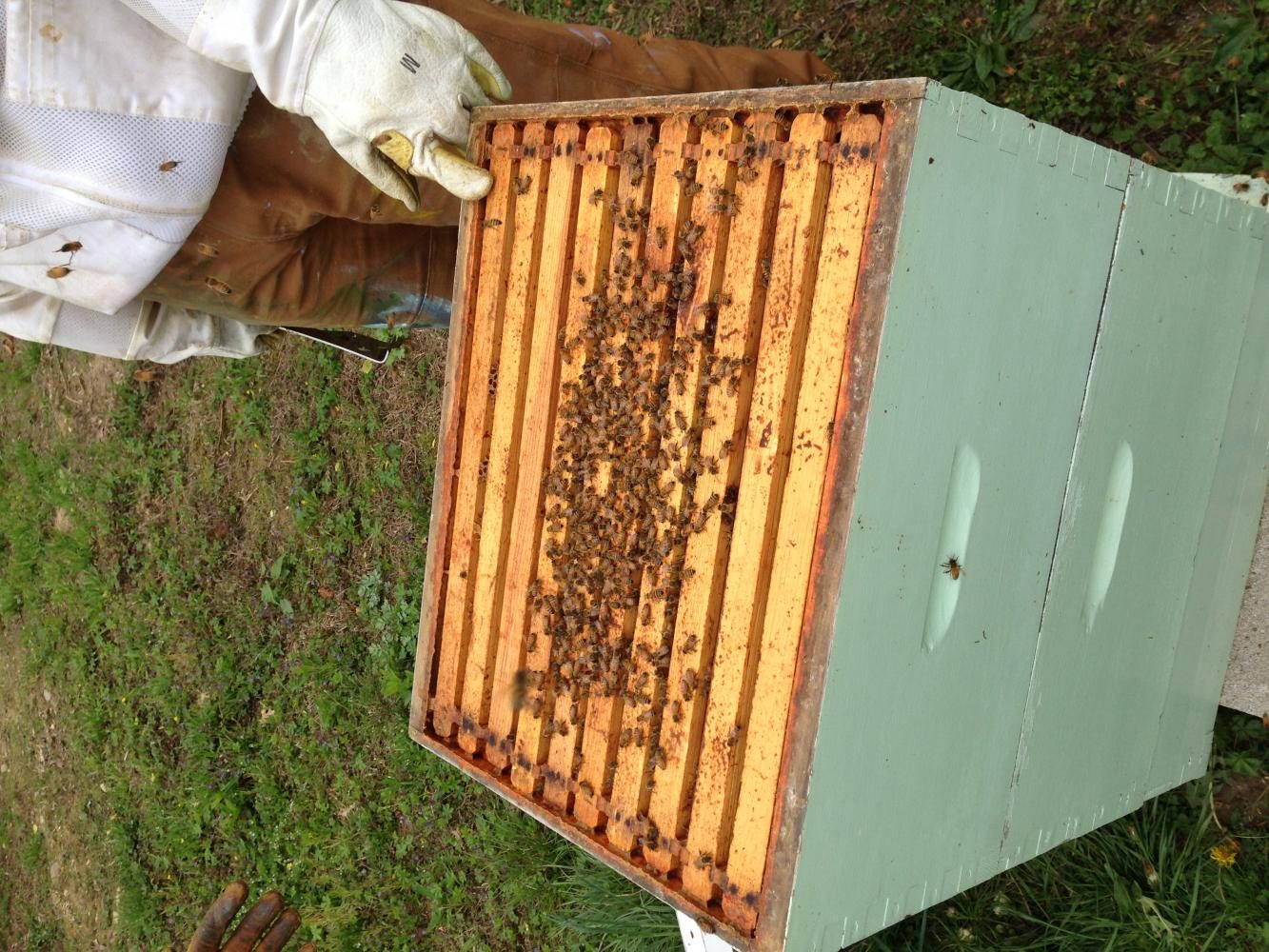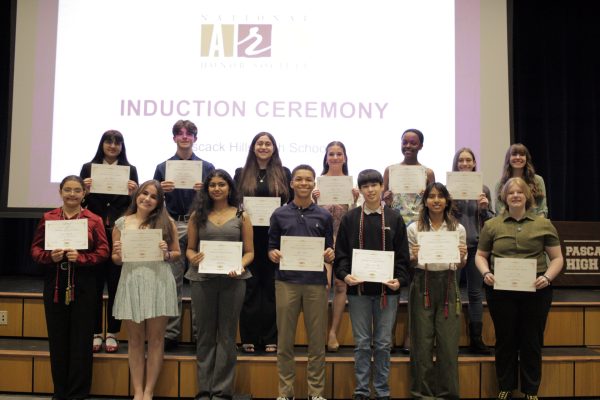Buzzing around with an almost master beekeeper
Photos by: Evan Michales
In order for someone to become a master beekeeper, you have to have five years experience working with bees. Justin Luna, a 17-year-old junior from Chestnut Ridge, N.Y., can now apply to become one.
Luna began working with bees in order to get a sustainable supply of honey for himself. Once he started, however, he gained a passion that has never wavered. By now, he has 15 hives active, and at the peak of the summer each hive can reach a maximum of almost 200,000 bees.
In comparison, bumblebees, who are endemic to the Americas, have colony numbers that barely reach 200 strong. Therefore, honeybees, who originated in Europe, are a godsend for farmers as the sheer size of honeybee hives massively outcompetes the bumblebee, allowing for a much greater amount of crops to be pollinated. The large population of honeybees can be seen within the hives themselves, as each time Luna pulls a frame out they can be covered completely with buzzing bees.
Bees are creatures that are incredibly hardworking. As Luna was checking the hives for activity, he had to constantly chip through propolis, a resin-like substance bees make to increase the structural integrity of the hive. He mentioned that within a few days, the same amount of propolis would be back.
Something that Luna strongly stresses is receiving a good education in order to go into beekeeping. This is so an amateur beekeeper doesn’t kill their hive as soon as they start. There is a training program offered by Rutgers University that Luna highly recommends. Additionally, Luna says that one year of apprenticeship is absolutely needed, so people know what to do in any scenario. Bees are incredibly complex organisms, so any mistake can be disastrous.
Luna has encountered some significant difficulties while maintaining his hives. Primarily, his community has not been particularly eager in supporting his endeavors. The police have come to his door, wondering about the distance his hives are from the street. Neighbors have asked Luna to put a net over the hives, which would be completely counterintuitive for the purpose of bees as pollinators. Bees usually travel as far as two miles around their hives to forage, yet can fly two to three times farther for better food possibilities.
On the flip side, academia has been extremely supportive of beekeepers, as they understand the essential role that bees play in ecosystems. Bees act as an indicator species, showing how healthy the surrounding ecosystem is. The better the ecosystem, the stronger the hive.
Another major problem for Luna and his bees has been global warming. Bees are sensitive to changes in the climate, something that we humans have been effecting for quite a long time. This has led to bees swarming far earlier than expected, which has caused serious troubles for the hive if the temperatures swing when the bees start being active.
The main misconception people have about bees is mistaking them for wasps, hornets, and yellowjackets, which can and do cause major harm to many people. However, honeybees do not attack their foes, because when they use their stinger they die. Instead, bees remain on the defensive, which forces beekeepers to use all five of their senses when working around the hives. You can tell when the bees get angry with you, as the volume of the buzzing drastically increases.
Luna, despite being in high school, frequently travels to other schools to raise awareness about the honeybee, and teaching people how they can become involved with beekeeping. In addition to the hives he maintains, he also produces cosmetics from the products he gathers from the bees, as well as delicious, fresh honey.
While beekeeping is an arduous profession, the fruits of your labors can be quite sweet indeed.















































Richard E Luna • Apr 20, 2021 at 10:14 AM
I am very proud of my grandchild, Justin Luna, for all his expertise in beekeeping—& at such young age!